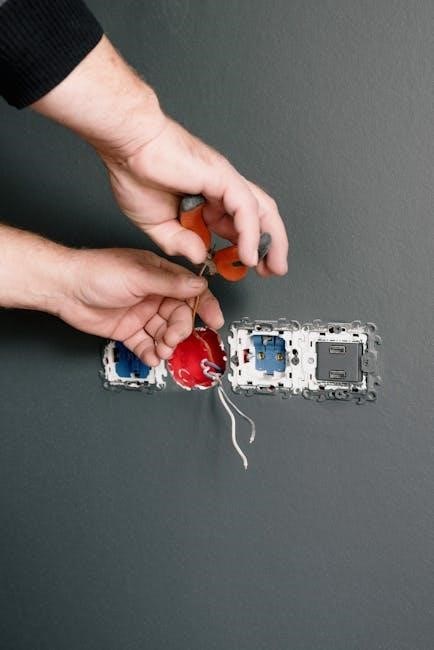Bad Boy MZ Magnum 54 Manual: Overview
The Bad Boy MZ Magnum 54 manual is your comprehensive guide to understanding, operating, and maintaining your zero-turn mower. This manual provides valuable information for achieving optimal performance and longevity. Congratulations on your new Bad Boy Mower!
Understanding Your Bad Boy MZ Magnum 54
This section helps you familiarize yourself with the Bad Boy MZ Magnum 54. Learn about its design, features, and intended use. Knowing your mower well ensures safe and effective operation for years of performance.
Key Features and Specifications
The Bad Boy MZ Magnum 54 boasts several features designed for durability and performance. Its robust, never-stamped deck ensures longevity, while the American-made frame provides stability. The mower is often equipped with a Kohler KT740 engine, delivering reliable power for various mowing tasks. Key specifications to note include the engine’s horsepower, deck width (54 inches), and fuel capacity.
Furthermore, the MZ Magnum 54 features a user-friendly design, incorporating an intuitive control panel and comfortable seating. The mower’s cutting height is adjustable, allowing for precise lawn maintenance. Safety features, such as the safety interlock system, are integrated to protect the operator. Understanding these features and specifications will enable you to operate and maintain your mower effectively. Consult the complete manual for detailed specifications and feature explanations.
Remember to always refer to your specific model’s manual for the most accurate information.
Accessing the Manual
Accessing your Bad Boy MZ Magnum 54 manual is easy. You can download a PDF version online or view it directly through Bad Boy’s website. This ensures convenient access to important information.
Downloading the PDF Manual
Downloading the PDF manual for your Bad Boy MZ Magnum 54 is a straightforward process, granting you immediate access to all necessary information regarding your mower. To begin, visit the official Bad Boy Mowers website or a trusted online source that hosts the manual in PDF format.
Once you’ve located the manual, click on the download link. The file will then be saved to your computer or mobile device, allowing for offline access whenever needed. This is particularly useful when working in areas with limited or no internet connectivity.
Ensure that you have a PDF reader installed on your device to open and view the manual. Popular options include Adobe Acrobat Reader and other free PDF viewers. By downloading the PDF manual, you can easily search for specific topics, print pages as needed, and keep a digital copy for future reference.
Online Viewing Options
If downloading the PDF manual isn’t your preference, numerous online viewing options are available for accessing the Bad Boy MZ Magnum 54 manual. The official Bad Boy Mowers website often provides a digital version of the manual that can be viewed directly in your web browser.
Additionally, many online mower parts retailers and service websites host manuals for various models, including the MZ Magnum 54. These online viewers typically offer features like searchable text, zoom functionality, and easy navigation between sections.
This allows you to quickly find the information you need without downloading large files. Online viewing is especially convenient when you need to consult the manual on the go or when using a device with limited storage space. Just ensure you have a stable internet connection to access the manual seamlessly.

Operation and Maintenance
Proper operation and regular maintenance are crucial for maximizing the lifespan and performance of your Bad Boy MZ Magnum 54. The manual provides detailed guidance on both aspects, ensuring optimal mower health.
Operating Instructions
The Bad Boy MZ Magnum 54 operating instructions detailed in the manual are essential for safe and effective use of your mower. Before starting, familiarize yourself with all controls, safety features, and warnings. Always perform a pre-operation check, ensuring fluid levels are correct and all components are in good working order.
Starting the engine involves engaging the parking brake, setting the throttle to the start position, and turning the ignition key. Once started, allow the engine to warm up briefly before engaging the blades. Adjust the cutting height to your desired level using the height adjustment lever.
Maneuvering the mower is achieved through the steering levers, allowing for precise control and zero-turn capabilities. When operating on slopes, exercise caution and reduce speed to maintain stability. Avoid sudden turns or stops, which can lead to loss of control. Remember, a well-maintained machine is a safe machine.
Maintenance Schedule and Procedures
Adhering to the recommended maintenance schedule and procedures outlined in the Bad Boy MZ Magnum 54 manual is crucial for extending the life of your mower. Regular maintenance ensures optimal performance and prevents costly repairs. The manual details specific intervals for various tasks, such as oil changes, filter replacements, and blade sharpening.
Procedures like changing the engine oil require draining the old oil, replacing the oil filter, and refilling with the recommended type and quantity of oil (typically 10W-30). Air filter maintenance involves cleaning or replacing the filter to ensure proper engine airflow.
Blade sharpening should be done regularly to maintain a clean cut. Inspect belts and pulleys for wear and replace them as needed. Grease all fittings to keep moving parts lubricated. By following these maintenance guidelines, you can keep your Bad Boy MZ Magnum 54 running smoothly for years.

Troubleshooting
This section provides guidance on diagnosing and resolving common issues encountered with the Bad Boy MZ Magnum 54. The troubleshooting tips can help identify problems and suggest potential solutions to get your mower back in action.
Common Issues and Solutions
Experiencing issues with your Bad Boy MZ Magnum 54? Many common problems can be easily resolved with a bit of troubleshooting. Let’s explore some frequent issues and their potential fixes.
Engine Surging or Stalling: This could be due to a dirty air filter. Inspect the filter; clean or replace it if necessary. Fuel issues, such as old fuel or a clogged fuel filter, can also cause surging.
Mower Not Starting: Ensure the safety interlock system is engaged properly. Check the battery connections and charge. A faulty ignition switch could also be the culprit.
Uneven Cut: Blade condition is crucial. Sharpen or replace dull blades. Also, check the deck level and adjust as needed. Tire pressure can also affect the cut.
Vibration: Check for loose blades or debris lodged in the mower deck. Bent blades can also cause excessive vibration.
Consult the manual for detailed diagrams and instructions to aid in your troubleshooting efforts.

Parts and Repair
When repairs are needed, finding the right parts is essential. Consult your Bad Boy MZ Magnum 54 manual for accurate part identification and diagrams. Ensure proper maintenance by using genuine Bad Boy parts.
Identifying Replacement Parts
Accurately identifying replacement parts for your Bad Boy MZ Magnum 54 is crucial for effective repairs and maintenance. Start by consulting the parts diagrams and schematics within your owner’s manual. These visual aids provide detailed breakdowns of the mower’s components, making it easier to pinpoint the exact part you need.
The manual will typically include exploded views, which show how the different parts fit together. Each part is assigned a unique number, which you can use when ordering replacements. Pay close attention to the model year of your mower, as parts can vary between different production years.
When identifying parts, consider factors like size, shape, and material. Compare the existing part with the diagrams in the manual to confirm a match. If you’re unsure, consult with a Bad Boy Mowers dealer or authorized service center for assistance. Using the correct replacement parts ensures optimal performance and prevents further damage to your mower.
Finding Parts Diagrams and Schematics
Locating parts diagrams and schematics for your Bad Boy MZ Magnum 54 is essential for proper maintenance and repairs. The primary source for these resources is your owner’s manual. This manual usually contains detailed parts breakdowns with corresponding diagrams, allowing you to easily identify and locate specific components.
If you’ve misplaced your physical manual, check the Bad Boy Mowers website. Many manufacturers offer digital versions of their manuals for download. Search for your specific model (MZ Magnum 54) to find the correct documentation.
Online parts retailers and forums dedicated to Bad Boy Mowers can also be valuable resources. These platforms often host user-submitted diagrams and schematics, expanding your options for finding the information you need. However, always verify the accuracy of any information obtained from unofficial sources.
By utilizing these resources, you can effectively find the parts diagrams and schematics required to keep your Bad Boy MZ Magnum 54 in top condition.

Safety Information
Prioritize safety when operating and maintaining your Bad Boy MZ Magnum 54. Always consult the safety section of the manual for crucial precautions and guidelines to prevent accidents and injuries.
Important Safety Precautions
Before operating your Bad Boy MZ Magnum 54, thoroughly review all safety precautions outlined in the owner’s manual. Always wear appropriate personal protective equipment, including eye and ear protection, and sturdy footwear. Never operate the mower under the influence of drugs or alcohol.
Ensure that all safety interlock systems are functioning correctly before each use. Keep children and pets away from the mowing area. Never allow anyone to ride as a passenger on the mower. Inspect the area for obstacles and remove them before mowing.
Be aware of potential hazards such as uneven terrain, slopes, and hidden objects. Avoid mowing near drop-offs or water. Always operate the mower in a well-ventilated area. Never refuel the mower while the engine is hot or running. Store fuel in a safe container away from heat sources.
Before performing any maintenance or repairs, disconnect the spark plug wire to prevent accidental starting. Follow all safety guidelines to ensure a safe and enjoyable mowing experience.



































